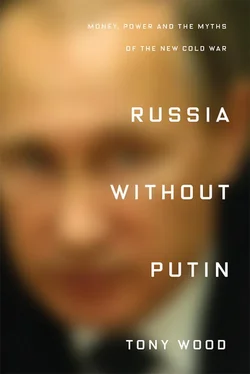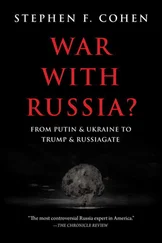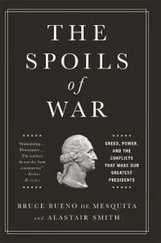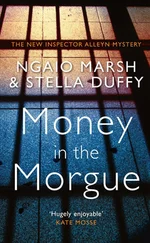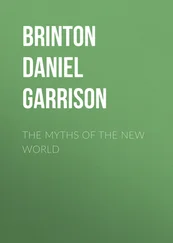The same is true of the triumphalist sloganeering that followed the annexation of Crimea. Russian state media depicted it as a patriotic feat, reuniting the motherland with what Putin, in his March 2014 speech requesting the peninsula’s formal admission to the Russian Federation, called ‘an inseparable part of Russia’. (In the same speech, Putin notably reiterated many of his criticisms of Western double standards, and again angrily cited the example of Kosovo.) {43} 43 ‘Address by the President of the Russian Federation’, 18 March 2014; available on Kremlin website.
Western governments and media, meanwhile, furiously protested the annexation. US secretary of state John Kerry called it ‘an incredible act of aggression’, adding – with the straightest of faces – ‘You just don’t in the twenty-first century behave in nineteenth-century fashion by invading another country on [a] completely trumped-up pretext.’ {44} 44 ‘Kerry condemns Russia’s “incredible act of aggression” in Ukraine’, Reuters, 2 March 2014.
This trading of rhetorical blows cannot obscure the fact that the actual consequences of the Crimean annexation were much to the West’s benefit and to Russia’s disadvantage. It accelerated Ukraine’s flight out of Russia’s sphere of influence: public support for NATO membership increased in Ukraine, and military ties between NATO and the Ukrainian armed forces were strengthened, bringing the alliance still closer to Russia’s heartland; meanwhile, a DCFTA between Ukraine and the EU came into force in 2016, setting the country on a path to economic integration with Europe rather than with Russia. At the same time, the fallout from the Ukraine crisis brought sanctions that damaged Russia’s economy – cutting off much-needed international investment, for example – and deepened its international isolation. By 2017 the Russian economy had begun to recover somewhat, thanks to a rise in global oil prices and the stimulus given to domestic production by the sanctions’ stifling of imports. But there can be no question that events in Ukraine after 2013 added up to a significant geopolitical defeat for Putin.
This is the context in which Russia’s subsequent foreign-policy moves need to be understood. The intervention in Syria, launched in September 2015, was in large measure a response to the disaster of the Kremlin’s policy in Ukraine. There were, to be sure, many motivations behind the decision to deepen Russia’s involvement in the Syrian conflict – a war in which it was already implicated through its support for the Assad regime. But some of the factors most commonly invoked were by 2015 secondary to Russia’s most pressing foreign-policy needs.
Economic and political ties between Moscow and Damascus stretched back to the Cold War, and might suggest an obvious material reason for Russia to prop up Bashar al-Assad’s rule. Under Assad’s father, Syria had been one of the USSR’s few state-level allies in the Middle East, and received substantial economic and military aid in exchange for the lease of a naval base at Tartus. {45} 45 On this history see Galia Golan, Soviet Policies in the Middle East from World War Two to Gorbachev , Cambridge 1990, pp. 140–156.
In the 1990s, these ties languished as Russia’s economy collapsed and its foreign policy turned it away from its former client states. In the 2000s, the Putin government revived the Syrian connection, and in 2006 signed an arms deal worth $4 billion, and in 2010 another worth $20 billion. {46} 46 Nikolai Kozhanov, Russia and the Syrian Conflict: Moscow’s Domestic, Regional and Strategic Interests , Berlin 2016, p. 17.
But with the Arab Spring and the outbreak of civil war in Syria, whatever material stakes Russia had there rapidly dwindled: bilateral trade slumped from $1.2 billion in 2011 to $376 million two years later – a lower volume of trade than Russia had with Iraq or Libya, and barely a tenth the size of its trade with Israel. {47} 47 Russian Ministry of Economic Development data, cited in Kozhanov, Russia and the Syrian Conflict , p. 11, Annex 1.
Domestic considerations certainly played some role. The Syrian intervention gave Putin a brief patriotic ratings boost; unlike Russia’s semi-covert role in eastern Ukraine – where its troops operated at arm’s length as ‘volunteers’ – this one could be loudly claimed, and broadcast on national television, though its popularity dwindled soon enough. The Russian military and its arms manufacturers also stood to gain. The 2008 war with Georgia had, among other things, revealed how far behind Russia was in terms of technology and military organization, prompting a major overhaul and upgrading of weapons. Syria, already devastated by years of war, provided a testing ground – and showroom – for the new-look armed forces and weapons systems. Among the main buyers in the region were Algeria and Egypt, who in 2014 signed arms deals with Russia worth $2.7 billion and $3.5 billion respectively. {48} 48 Kozhanov, Russia and the Syrian Conflict , p. 2.
In one important sense, internal concerns overlapped with external ones. Moscow’s bid to ensure Assad’s survival in power was to some degree motivated by its aversion to regime change. A deep legitimism had been built into Russian policy since the Orange Revolution in Ukraine; the Maidan increased the feeling of urgency behind it. The same pro-incumbent logic applied to the Middle East during the Arab Spring: the Kremlin came to view the revolts as another iteration of the ‘Colour Revolutions’, encouraged if not actually sponsored by the US and its allies. It did not immediately see the 2011 revolts in Tunisia and Egypt as conforming to a larger pattern; it was only the fall of Gaddafi that really fixed this interpretation in the Kremlin’s mind. In March 2011, when the UN Security Council voted on a resolution authorizing no-fly zones over Libya, President Medvedev decided to abstain rather than veto it – a gesture that signalled the persistence of the pro-Western current in Russian foreign-policy thinking, and opened the way for a Western intervention that replicated the destruction and turmoil visited on Iraq. When a similar fate threatened Assad, Moscow was determined not to make the same mistakes, and vetoed eleven UNSC resolutions on Syria between October 2011 and April 2018.
Russia’s intervention in Syria, starting in 2015, was initially underpinned by the same anti-regime change logic, which lent its actions a brutal simplicity. The complexity of the conflict – the range of political identities within the rebellion, the country’s regional and sectarian mosaic – was reduced to a struggle between Assad and a monolithic opposition that Moscow, too, labelled ‘terrorists’. On the battlefield, all anti-Assad forces were placed in the same category as ISIS. This may have made Russia’s stance more coherent than that of Western powers, in which different Western allies – or even different agencies of the same government – backed opposing militias. {49} 49 See for example ‘In Syria, militias armed by the Pentagon fight those armed by the CIA’, Los Angeles Times , 27 March 2016.
But it was scarcely less destructive, as the fate of Aleppo demonstrated. The target of ferocious bombing since 2012, the city was subjected to further pounding by Russian airstrikes in 2015 and 2016. At the same time, however, Russia’s defence of Assad was not unreserved or especially entrenched. Only weeks after launching airstrikes to prevent the Syrian government from falling, the Russian Foreign Ministry’s spokesperson was asserting that Assad’s continuation in power was ‘absolutely not’ a matter of principle for Moscow; its professed concern was that regime change should not be imposed from without, and that Syrian state institutions should remain intact during any political transition. {50} 50 Maria Zakharova, interview with Ekho Moskvy, 3 November 2015; transcript and audio available at http://echo.msk.ru .
Читать дальше
